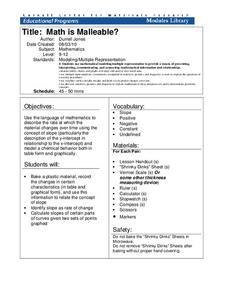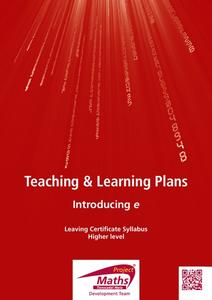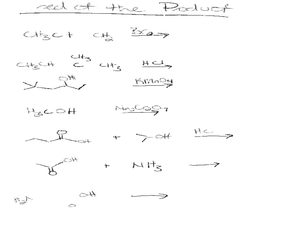Curated OER
Spontaneity, Disorder and Entropy
In this physical and chemical change worksheet, students calculate the entropy change involved in different chemical changes. This worksheet has 4 problems to solve.
Curated OER
Displacement Reactions and Acid/Base Reactions
In this chemical reactions instructional activity, students review the solubility rules for common salts. Students determine the molecular equation, ionic equation, and net ionic equation for specific reactions. Students calculate moles...
Curated OER
Chemical Reactions
In this chemical reactions worksheet, learners determine if solutions are acidic, basic, or neutral. Students give reactions' molecular equations and ionic equations. This worksheet has 14 problems to solve.
Curated OER
Balancing Chemical Equations
Ninth graders explain how atoms and molecules form different substances during chemical reactions and how these processes require losing, gaining or sharing electrons. They correctly write chemical formulas and show how a balanced...
Curated OER
Predicting the Products of a Reaction
In this reactions worksheet, students predict the products of 10 equations given the reactants and the type of equation such as decomposition, synthesis or single displacement.
Curated OER
Spontaneous Cell Reaction
In this spontaneous cell reaction worksheet, students write equations for these types of reactions and determine the voltage associated with the cell. This worksheet has 4 problems to solve.
Curated OER
Balancing Chemical Reactions 2
For this balancing chemical reactions worksheet, students balance equations, identify electrons gained or lost in atoms and identify the number of atoms of each element for the reactants and products in equations. They also answer 3...
Curated OER
Chemical Equations
In this chemical equations learning exercise, students predict the major organic products of given reactions. Students give the mechanism for reactions. Students also give the product for ozonolysis of given alkenes. This learning...
Curated OER
Micro-Reaction Lab: Gas Prouducing Reactions
Students investigate single displacement or double displacement reactions. They have to identify the type of gas produced by filling in the blanks to a data and observation sheet. Also, having to be done is writing balanced equations for...
Cornell University
Math Is Malleable?
Learn about polymers while playing with shrinky dinks. Young scholars create a shrinky dink design, bake it, and then record the area, volume, and thickness over time. They model the data using a graph and highlight the key features of...
Project Maths
Introduction to e
First there was pi and now there's e. A discovery-based lesson plan helps learners find a pattern in compound interest as the compounding period changes. Their investigation results in the discovery of the number e. The lesson plan is...
Curated OER
Additional Aqueous Solution Review Problems
In this solutions worksheet, students balance chemical equations, classify reactions by the type of reaction it represents, and review the solubility rules. Students practice working out double displacement, neutralization, and dilution...
Curated OER
Product Formation Homework
In this product formation worksheet, students are given the reactants for 6 chemical equations and they determine if the products will form. They write a balanced chemical reaction for a double replacement reaction as well as the ionic...
Curated OER
Acid and Base Homework
In this acid and base worksheet, students answer 7 questions about acidic and basic solutions such as the color each turns litmus paper, the pH values, the balanced equations for neutralization reactions and their pH and concentrations.
Curated OER
Inorganic Reactions
In this inorganic reactions worksheet, students complete 7 chemical reactions by predicting the products and balancing the equations.
Curated OER
Oxidation and Combustion: Chemical Reactions in Fire
Students study oxidation and define vocabulary pertinent to it. In this oxidation lesson students make predictions and create experiments
Curated OER
Sample Midyear Examination (Chemistry and Biology)
A 12-page midterm exam sample can be given to young scientists in preparation for an exam. This particular installment is geared toward a class that delves into both ecology and chemistry concepts. There is no way to separate the 50...
Curated OER
Stoichiometry
In this stoichiometry worksheet, students solve thirty problems using the process of stoichiometry to find moles, molecules, and masses of substances in chemical reactions. Students balance chemical equations, find limiting reagents and...
Curated OER
Stoichiometry in the Real World
Real world chemical reactions are used as examples for teaching stoichiometry. Viewers work through air bag inflation, fat conversion to water in a camel, rocket fuel combustion, and carbon dioxide removal in spacecraft. Make...
Curated OER
Spectrophotometer Determination of an Equilibrium Constant
Students determine an equilibrium constant using a spectrophotometer. In this equilibrium lesson plan, students calibrate a spectrophotometer with 5 solutions in order to prepare the spectrophotometer for the experiment. Students measure...
Texas State Energy Conservation Office
Investigation: Chemical Models
Science teams make models of four different hydrocarbon compounds that we commonly use for fuel. Then they demonstrate chemical reactions that result when energy is produced. This can be used as an enrichment when your class is studying...
Curated OER
Chemical Reactions
Learners work in groups to define chemistry vocabulary including the terms reactants, products, exothermic and endothermic. They then combine the group definitions to arrive at a consensus definition for the class. Students also listen...
Curated OER
Chemistry: Atoms
In this chemistry worksheet students complete a series of multiple choice and short answer questions on elements, chemical reactions and balancing equations.
Curated OER
Exam Review: Chemistry Calculations
For this chemistry calculations review worksheet, students solve 33 review problems about titrations, precipitates, pressure and volume of gases, combustion reactions, heat of combustion, molar concentrations and molecular formulas.























